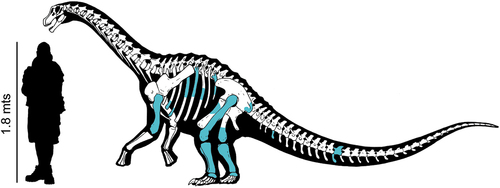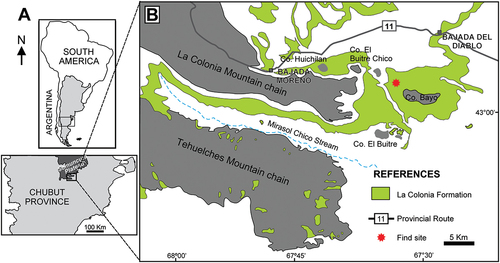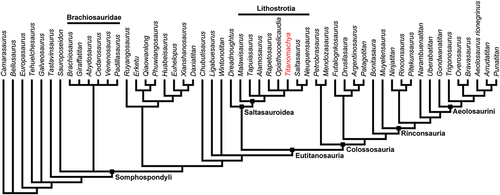Titanomachya
- unexpecteddinolesson
- Apr 6
- 3 min read
Updated: Apr 6
MEANING: Titanomachy
PERIOD: Late Cretaceous
CONTINENT: South America
Titanomachya is a titanosaurian sauropod from the Late Cretaceous of what is now South America. The name alludes to the battle in which the mythological Greek Titans were defeated, as a reference to being near the extinction of the titanosaurs. Titanomachya is extremely small for a titanosaur, at only 6 m in length, and weighing about 8 t in body mass.

Abstract from paper: Knowledge of the Campanian-Maastrichtian titanosaurian sauropods from southern South America has increased markedly in recent years. Several taxa have been reported from northern Patagonia, as well as few taxa from southern Patagonia that were described in the last years. However, titanosaurs from the end-Cretaceous of Central Patagonia are poorly known. Here we report the associated remains of a new species of a titanosaurian sauropod from the La Colonia Formation found in northern Chubut Province. Titanomachya gimenezi gen. et sp. nov. is represented by a caudal vertebra and appendicular elements. Titanomachya, is interpreted as a member of Lithostrotia, sharing derived features with saltasaurids and bearing unique characteristics in the astragalus. The astragalus morphology of Titanomachya display an intermediate form between Colossosauria and Saltasauroidea, allowing articulation between zeugopodium and autopodium with contributions from both the tibia and fibula. The type specimen is a small-sized adult, estimated at 5.8–9.8 tons. Comparative analyses reveal distinct sauropod faunas in different Patagonian regions and Brazilian formations during the Campanian – Maastrichtian. In northern Patagonia, aeolosaurines and saltasaurines predominate, while in southern Patagonia predominate colossosaurians and other large titanosaurs. The less well-known sauropod fauna from central Patagonia includes aeolosaurines, eutitanosaurs, and the addition of small-bodied saltasauroids such as Titanomachya.
Titanomachya is from the Late Cretaceous. The Cretaceous is the third and final geological period of the Mesozoic Era, with the Late Cretaceous making up roughly the second half of it, lasting from about 100 to 66 million years ago. It was a time of significant evolutionary change, with dinosaurs reaching their greatest diversity before the mass extinction at the end of the Cretaceous.
The Cretaceous was a period with a relatively warm climate, though the Late Cretaceous experienced a global cooling trend, caused by falling levels of carbon dioxide in the atmosphere. The continents were nearing their present positions, but high sea levels flooded low-lying regions, turning Europe into an archipelago, and forming the Western Interior Seaway in North America. These seas were home to a variety of marine reptiles, including mosasaurs and plesiosaurs, while pterosaurs and birds shared the skies.
On land, dinosaurs continued to thrive and diversify during the Late Cretaceous, producing many of the most well-known groups, including tyrannosaurs, hadrosaurs, and pachycephalosaurs. Established Cretaceous dinosaur clades like the ceratopsians, ankylosaurs, and dromaeosaurs continued to flourish. Sauropod species consisted almost exclusively of titanosaurs, which seemed to be confined to the Southern Hemisphere for much of the Late Cretaceous. Flowering plants and grasses diversified and spread, becoming the dominant flora similar to what we see today.
The Cretaceous (along with the Mesozoic) ended with the Cretaceous–Paleogene (K–Pg) extinction event, a large mass extinction in which many groups, including non-avian dinosaurs, pterosaurs, and large marine reptiles, died out. This event, likely triggered by an asteroid impact, is marked by the abrupt K–Pg boundary, a distinct geologic layer separating the Mesozoic and Cenozoic Eras. In its aftermath, mammals and avian dinosaurs rapidly diversified, becoming the dominant land animals of the Cenozoic Era.

Titanomachya is a sauropod. Sauropods are saurischian dinosaurs that had very long necks, long tails, small heads (relative to the rest of their body), and four thick, pillar-like legs. They are notable for the enormous sizes attained by some species, and the group includes the largest animals to have ever lived on land. Well-known genera include Brachiosaurus, Diplodocus, Apatosaurus and Brontosaurus.
The oldest known unequivocal sauropod dinosaurs are known from the Early Jurassic, and by the Late Jurassic (150 million years ago), sauropods had become widespread. By the Late Cretaceous, one group of sauropods, the titanosaurs, had replaced all others and had a near-global distribution. This group included the largest animals ever to walk the earth. Estimates vary, but the largest titanosaurs are estimated at upward of around 40 m, and weighing 100 t, or possibly even more.
As with all other non-avian dinosaurs alive at the time, the titanosaurs died out in the Cretaceous–Paleogene extinction event. Fossilized remains of sauropods have been found on every continent, including Antarctica.











